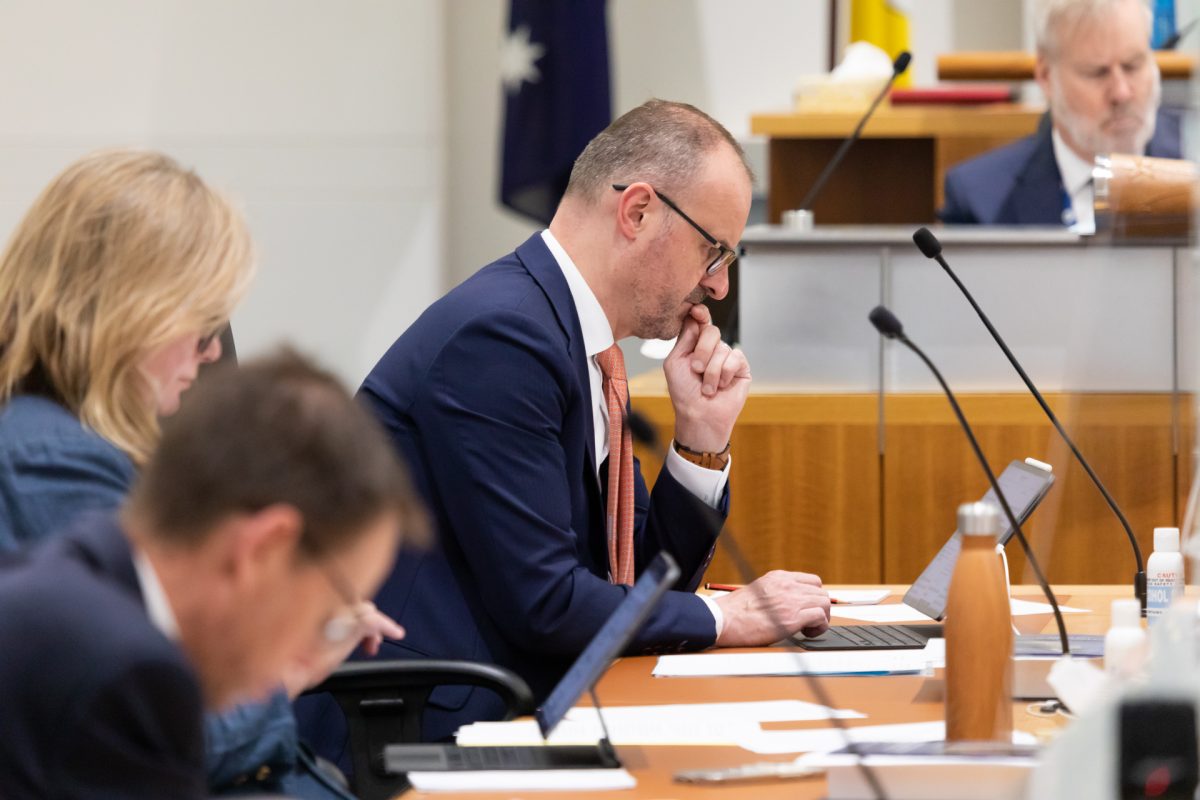
Andrew Barr said the payroll tax debate has been “based on a fundamental misunderstanding” about how the tax works. Photo: Michelle Kroll.
Chief Minister and Treasurer Andrew Barr slammed claims that introducing an additional payroll tax on general practitioners would cause practices in the ACT to close, and said the Royal Australian College of General Practitioners (RACGP) was operating on a “wild assertion with no basis”.
“There is no basis on which payroll tax would be the reason that a GP practice would close in the ACT. We have the highest payroll tax-free threshold in the nation,” Mr Barr said in question time in the Assembly yesterday (29 August).
“Lobby groups who seek to minimise tax will make all sorts of wild accusations. This debate has been full of that and it has been based on a fundamental misunderstanding about how the tax is applied and how it is collected.”
The RACGP, Australian Medical Association (AMA) and the Canberra Liberals have been vocally opposed to the payroll tax, warning that it could lead to clinics closing their doors and that GPs would be forced to pass on higher costs to their patients.
An emergency meeting of GPs organised by AMA ACT and RACGP last night unanimously condemned the move and said “the ACT Government doesn’t understand how general practice works, and the new patient tax will need to be passed through to patients”.
“The only practical alternative to avoid this happening, is for general practices in the ACT to be exempt from the new tax,” AMA ACT president-elect and Waniassa GP Dr Kerrie Aust said.
General practices already pay a payroll tax on admin staff, nurses and trainee doctors. The RACGP says the new tax obligation would mean tenant GPs would also be counted as employees for payroll tax purposes.
The Territory’s payroll tax-free threshold of $2 million is the highest in the country, meaning that most small and medium-sized businesses are not liable to pay. This includes the majority of GP clinics. According to the ACT Government, fewer than 10 practices would be affected.
Asked whether the RACGP was “wrong” to claim that GP practices will be forced to close if the additional payroll tax is introduced, Mr Barr said, “Certainly their analysis, from my meetings with them, assumed that payroll tax was applicable on the entire payroll”.
“They didn’t understand the $2 million tax-free threshold.
“They undertook modelling and put a figure into a public arena that was based on an assumption that if your payroll went, for example, to $2.1 million that you would pay payroll tax on the entire $2.1 million, not the $100,000 that was above the $2 million threshold.
“So that was a factual error in their work and they put that into the public arena.
“It’s not correct … it’s a wild assertion with no basis.”
Mr Barr said that the payroll tax would potentially cost patients $1 to $2 more, according to analysis. However, this would only be imposed on the largest corporate practices, of which there are few in the ACT.
“Given the $2 million payroll tax-free threshold, the fact most GP practices will not reach that threshold, it is unlikely that there will be any substantive impact in relation to fees for patients to the extent that there could be,” he said.
However, GPs have questioned whether the ACT Government is correct that less than 10 general practices would be affected by the additional payroll tax. Canberra GP Dr John Deery said practices would easily meet the threshold if they have more than five full-time staff, which would apply to most practices in the ACT.
“If the payroll tax is applied to GP revenue, then it won’t be just 10 practices. It will be many more.
“You only need it for maybe four to five full-time equivalent GPS to get over the threshold of $2 million. And so that means a payroll tax will be applicable to the majority of practices in Canberra,” Dr Deery said.
Ms Lee asked Mr Barr whether he could name the individual practices that would be affected. He said he could not but that he was confident there were less than 10 practices registered already paying payroll tax.
“It is clear that in order to pay payroll tax, you must have a taxable payroll, payroll not turnover, which has been mistakenly reported numerous times is a big difference. Payroll above $2 million. That means you would have a lot of staff. Most do not,” Mr Barr said.




















